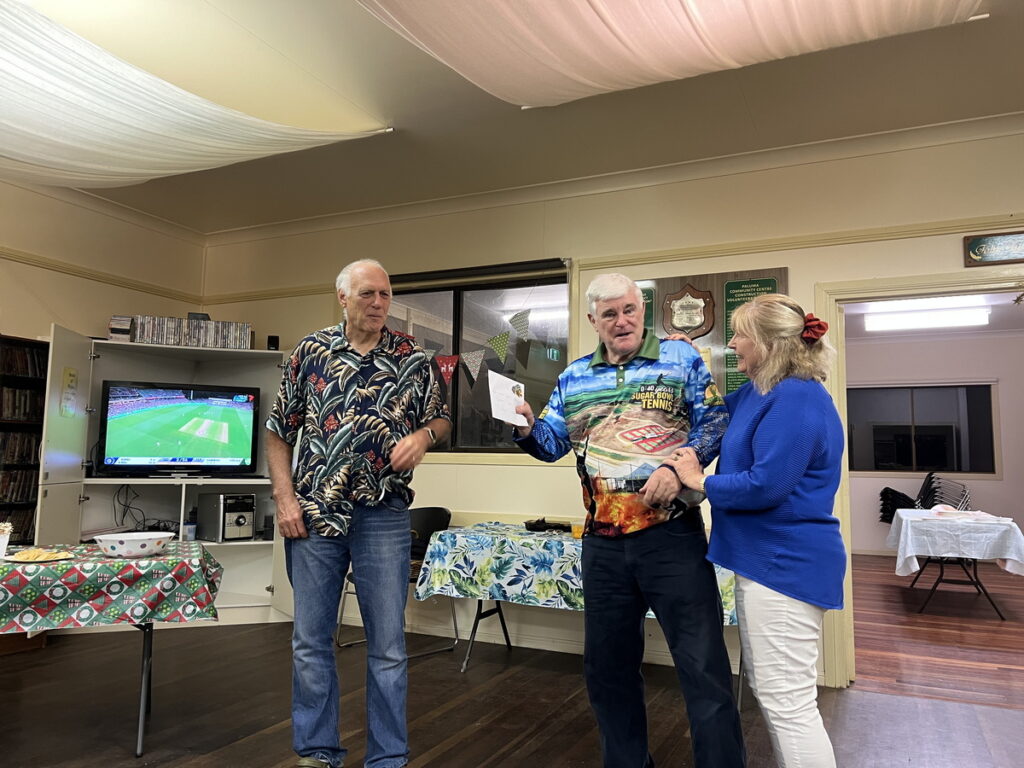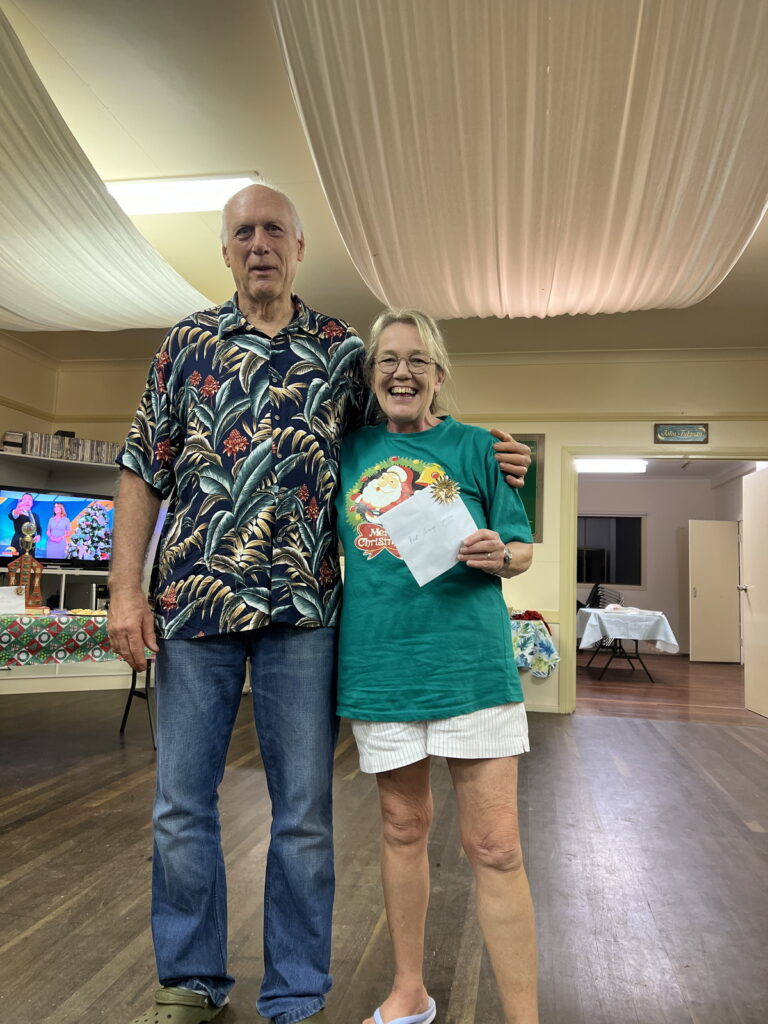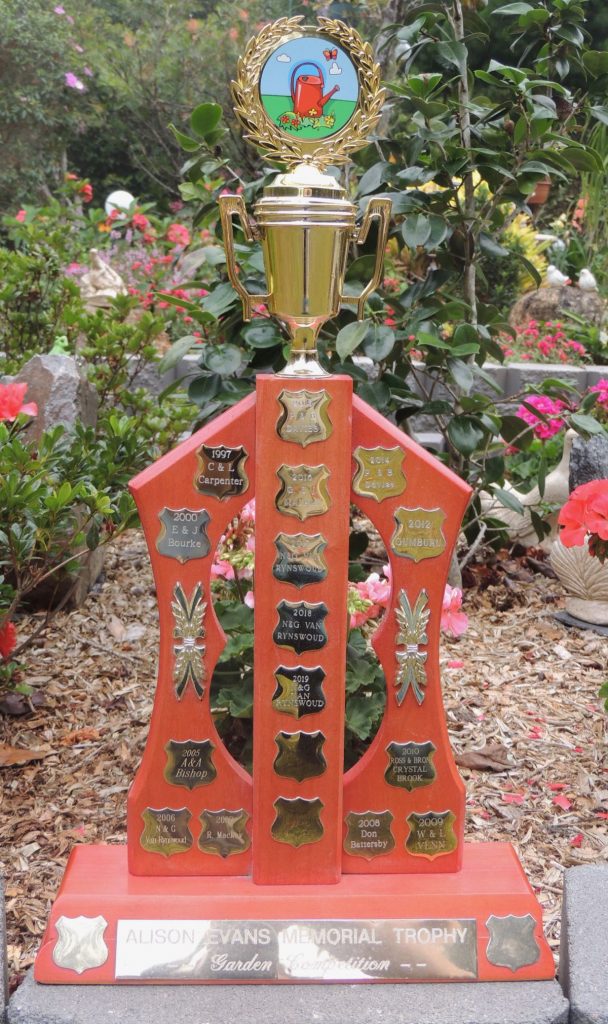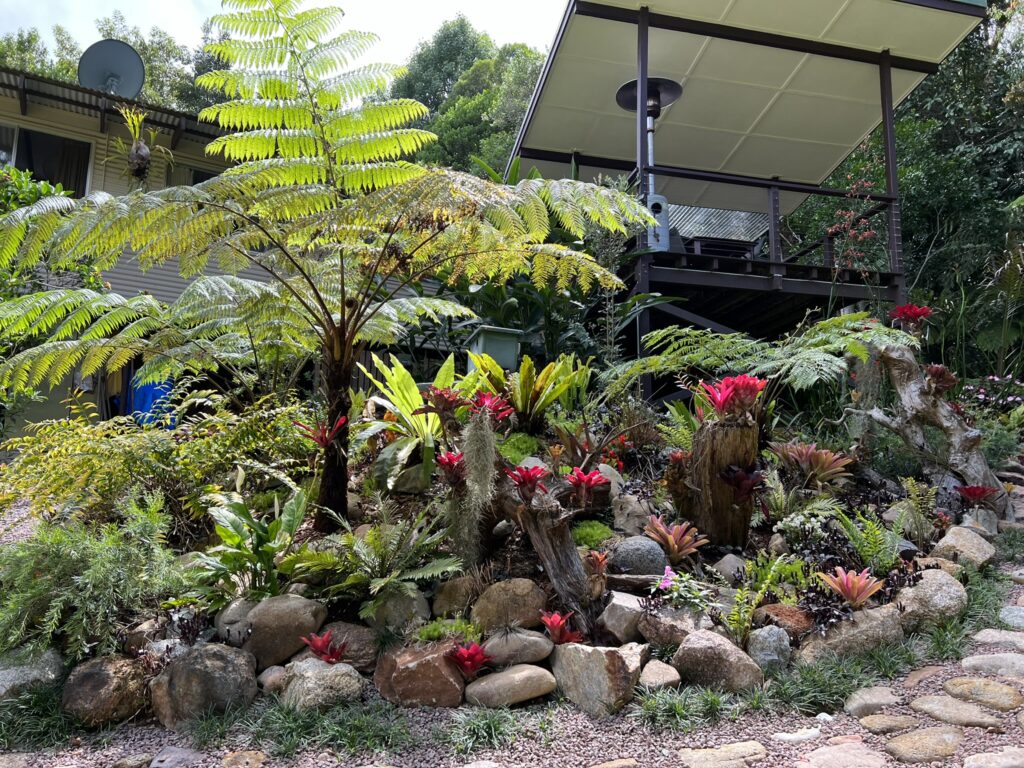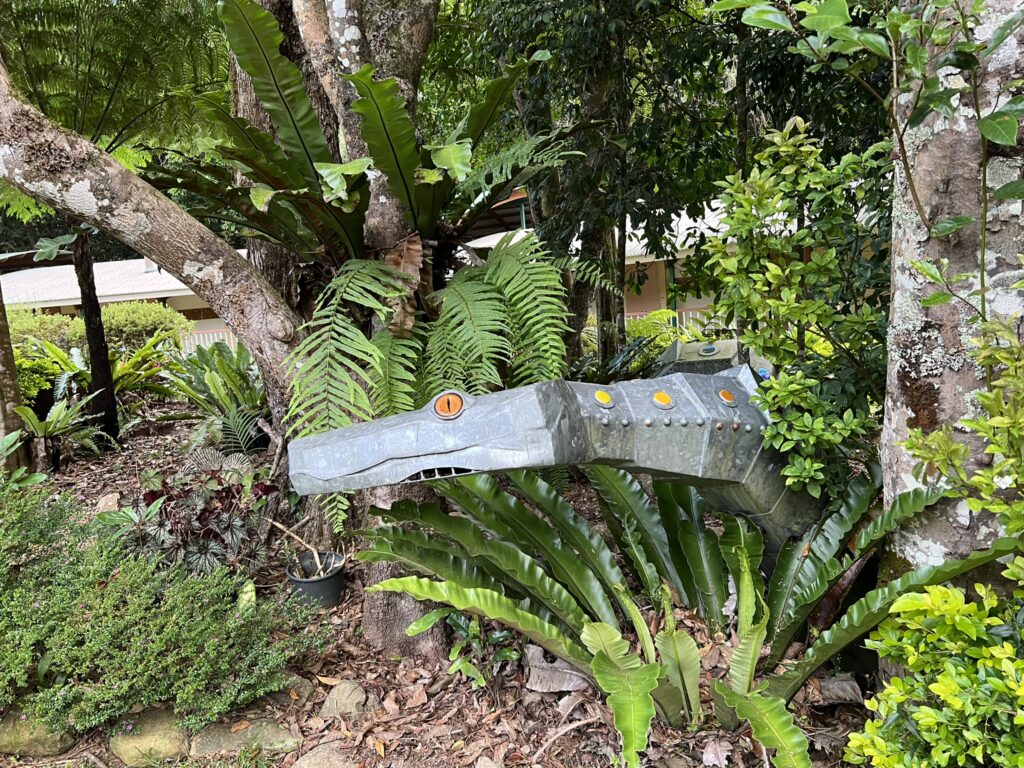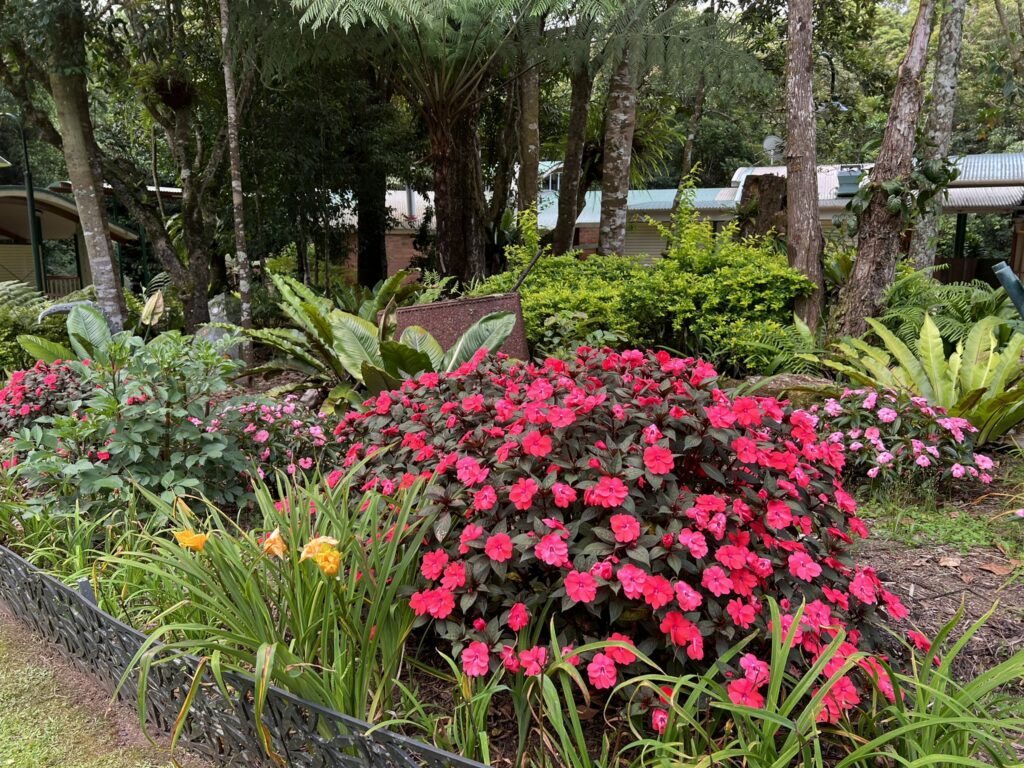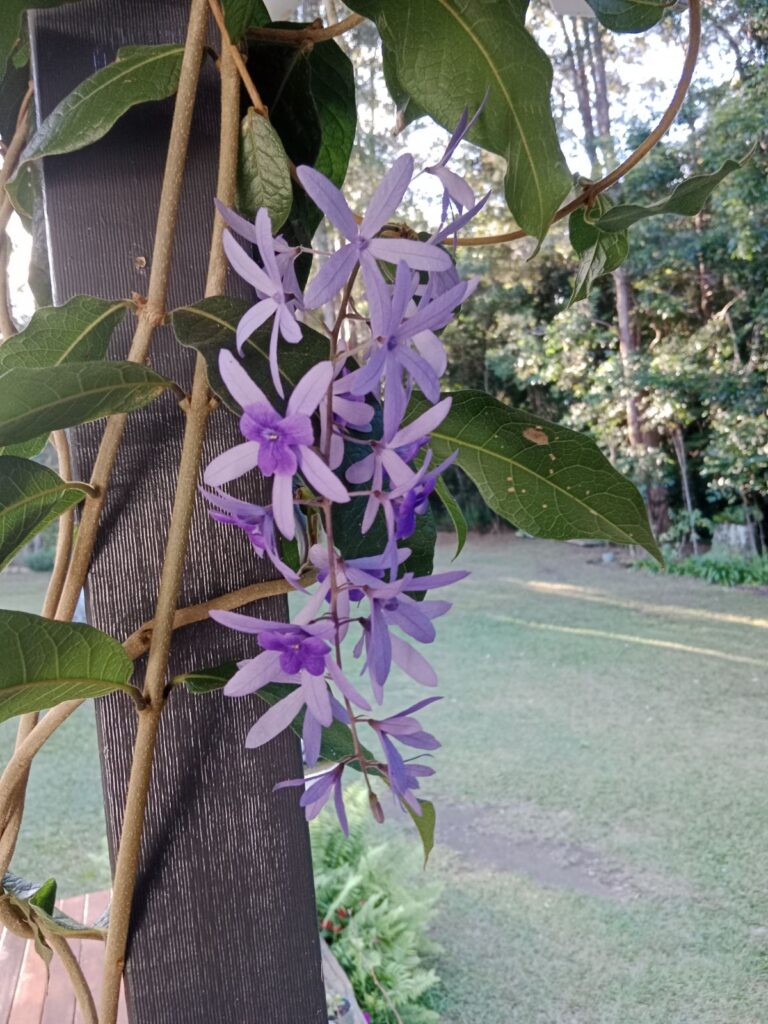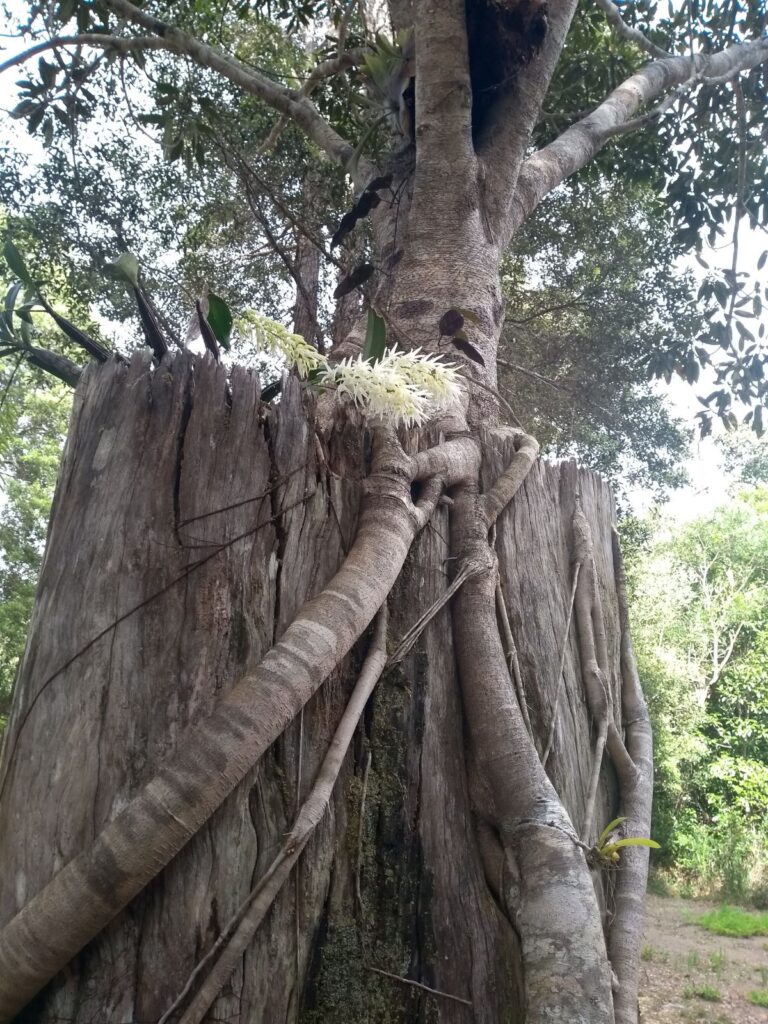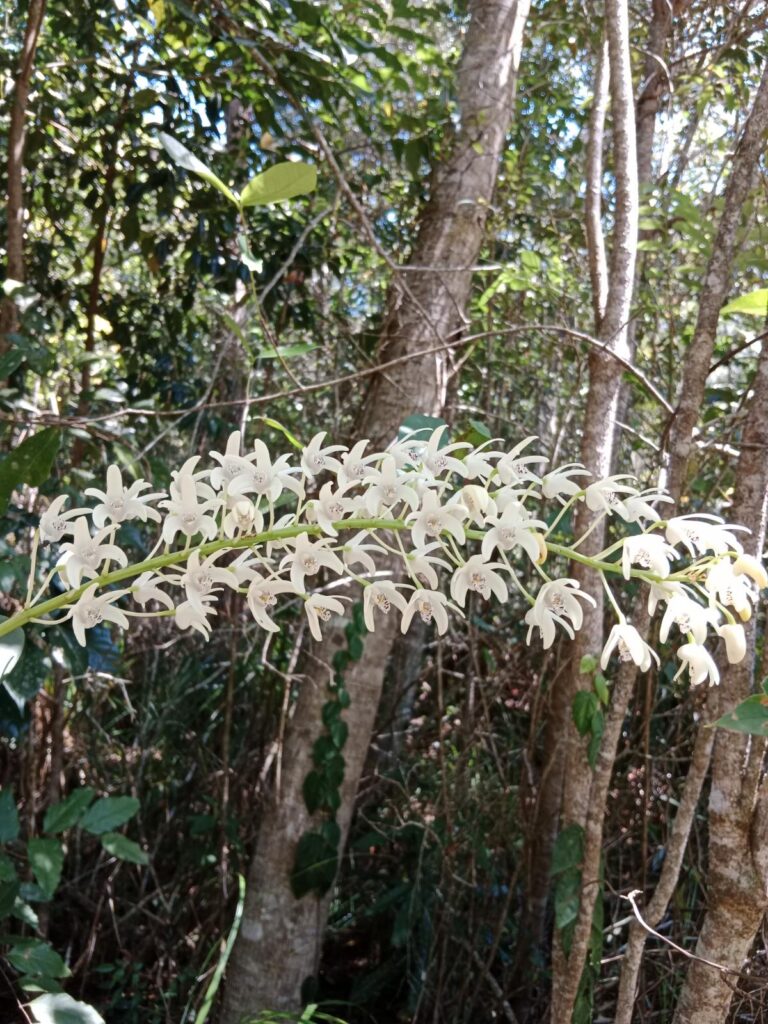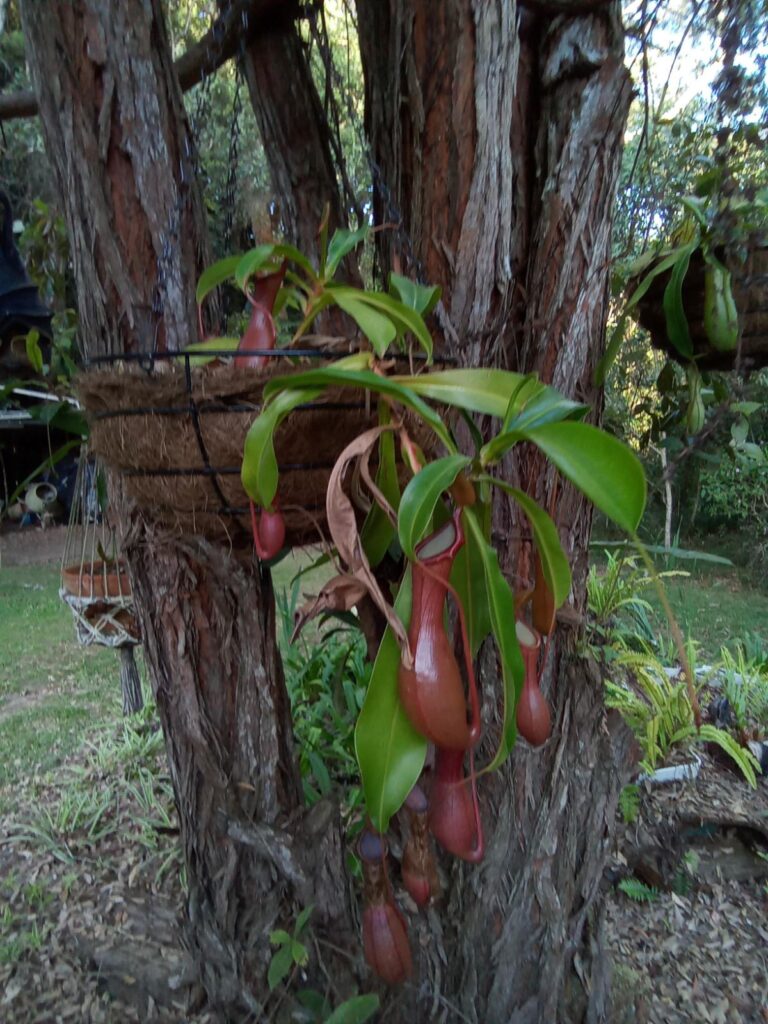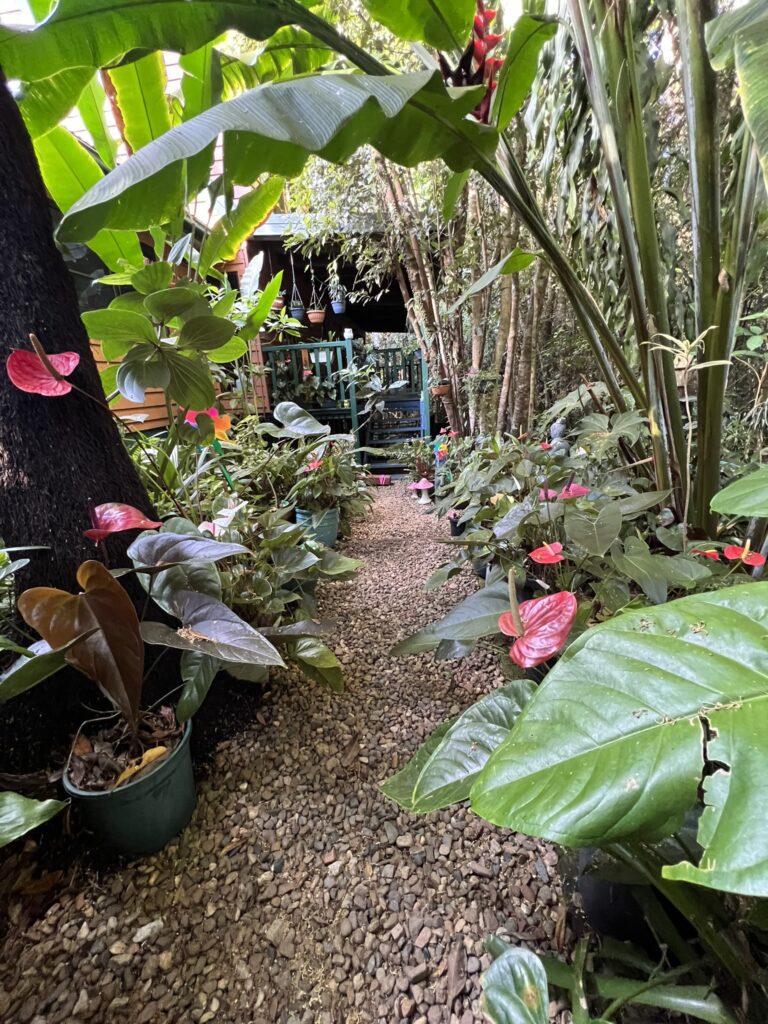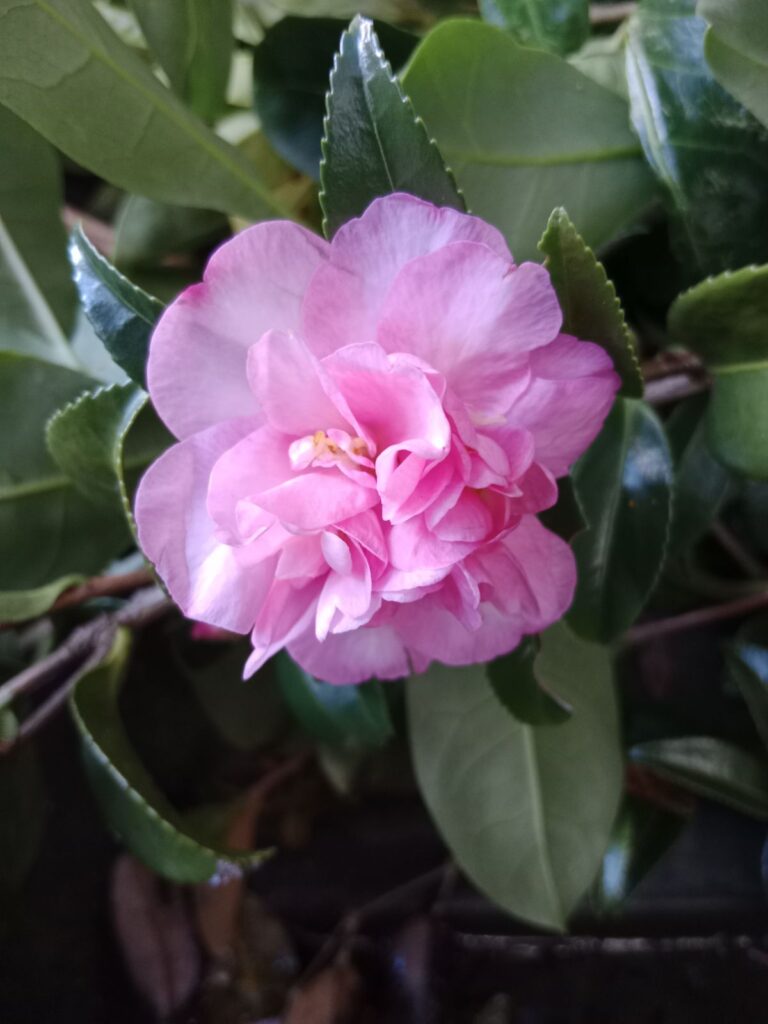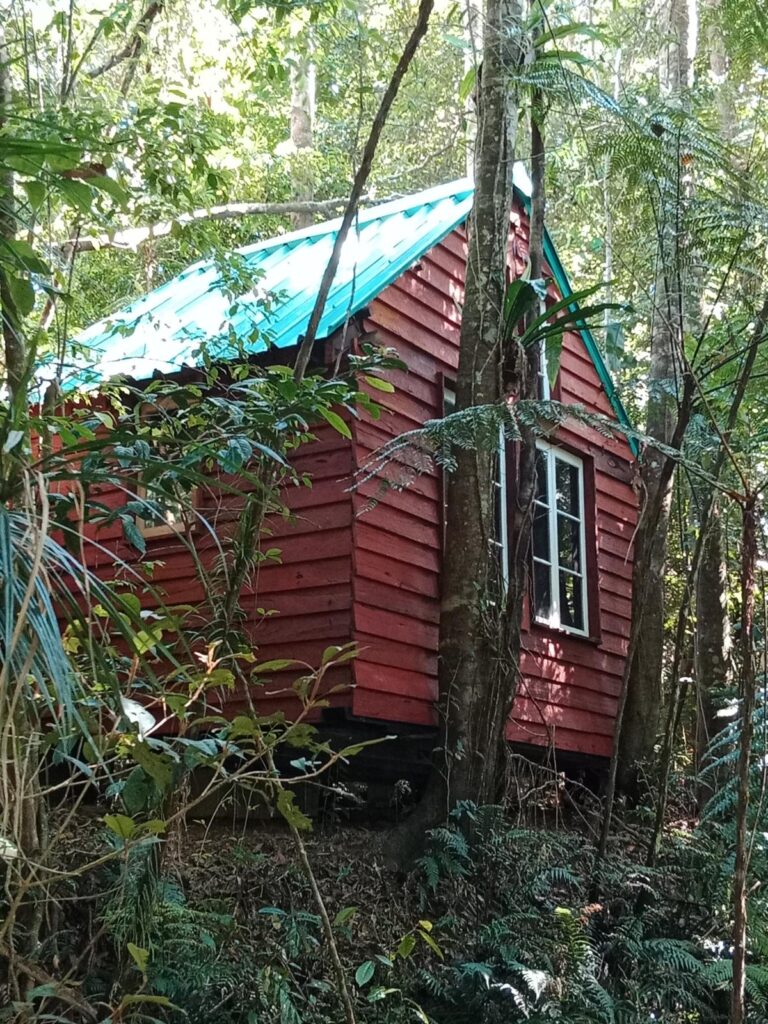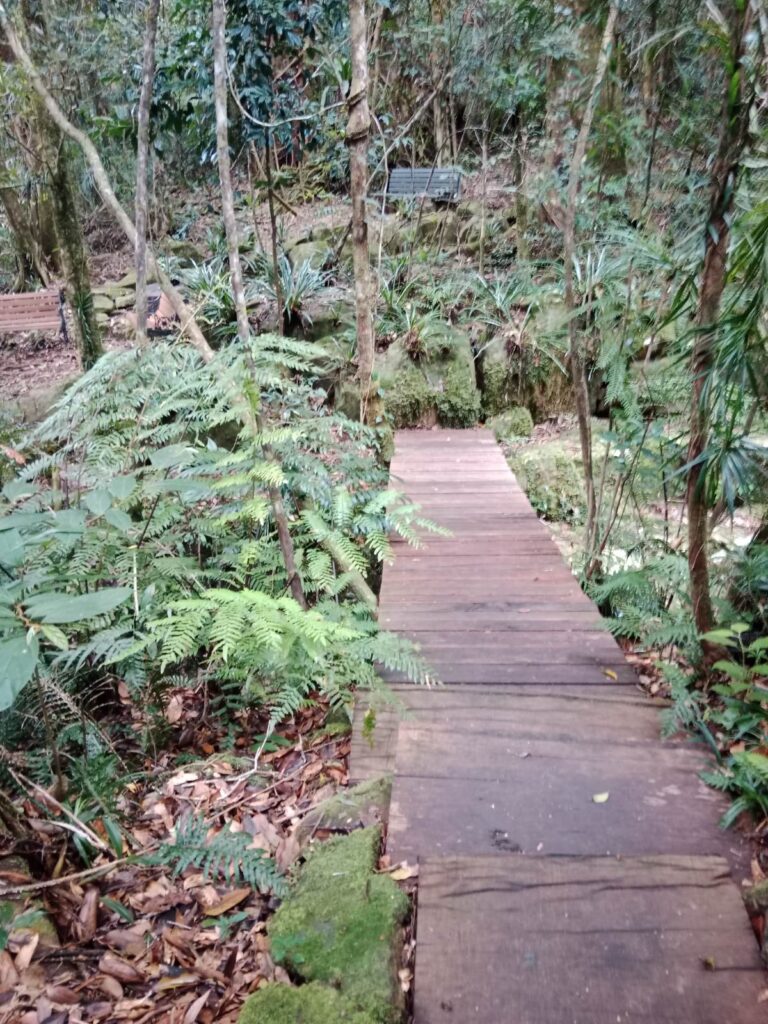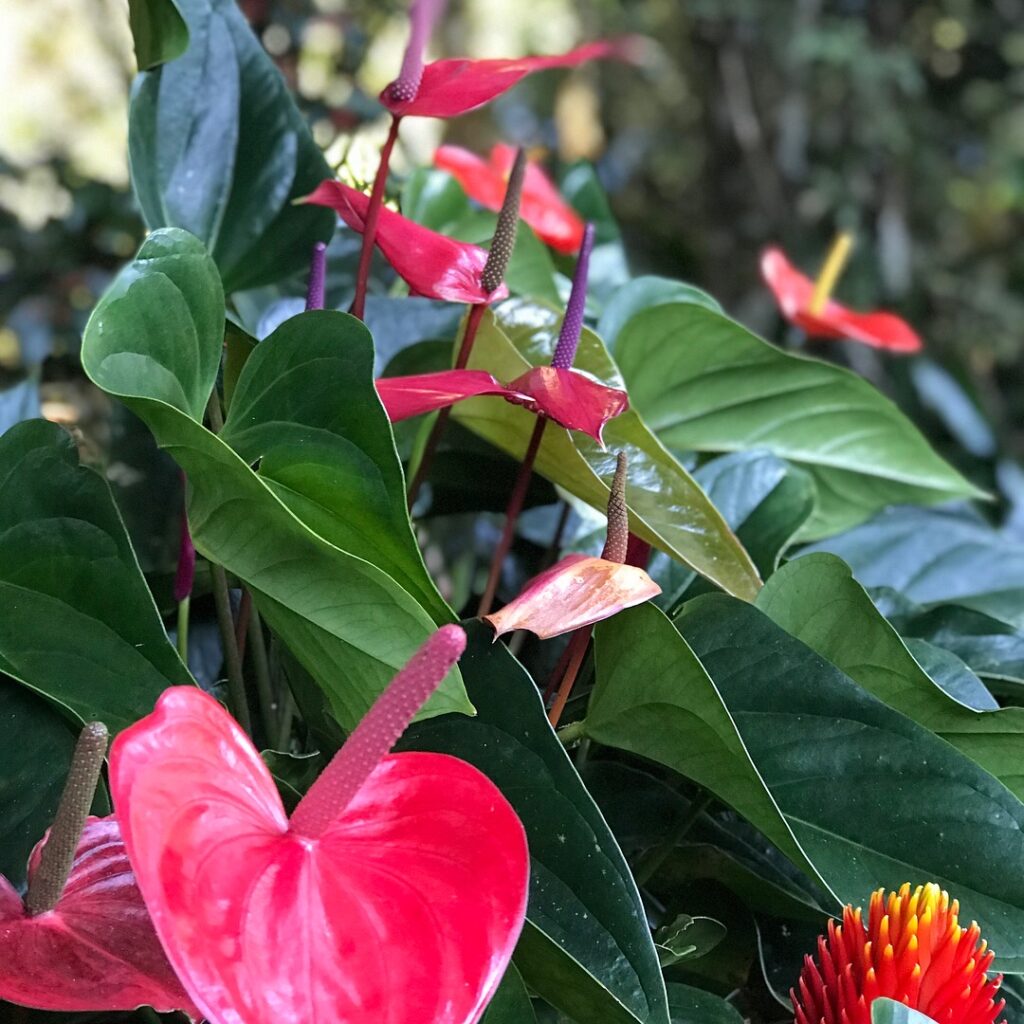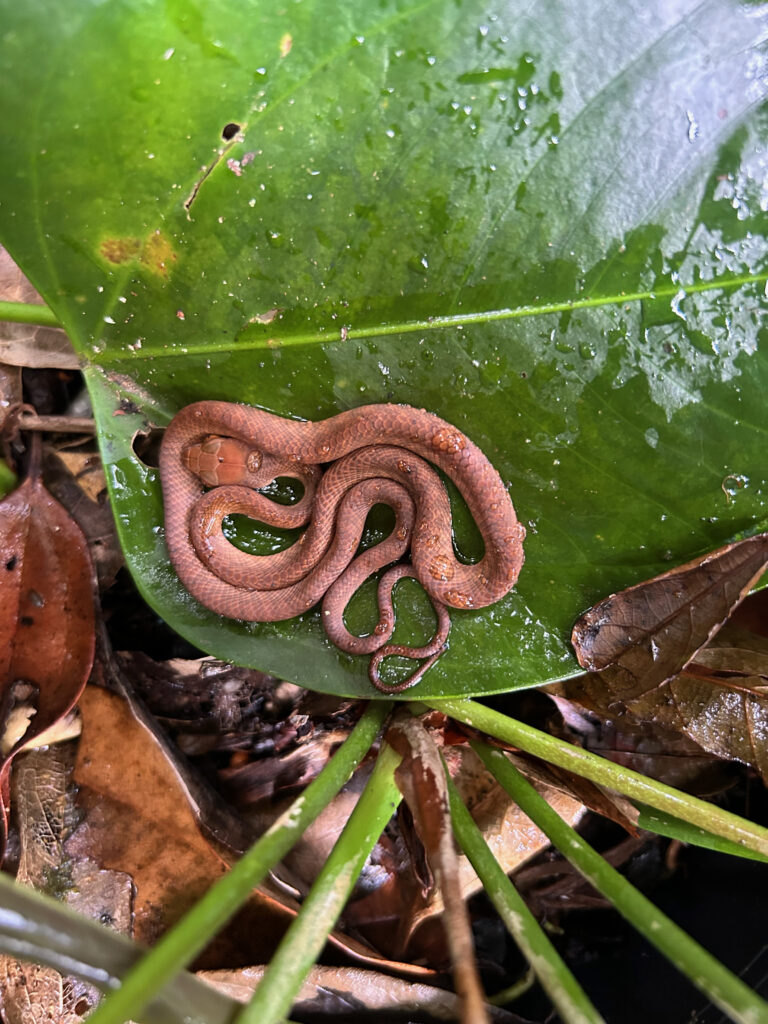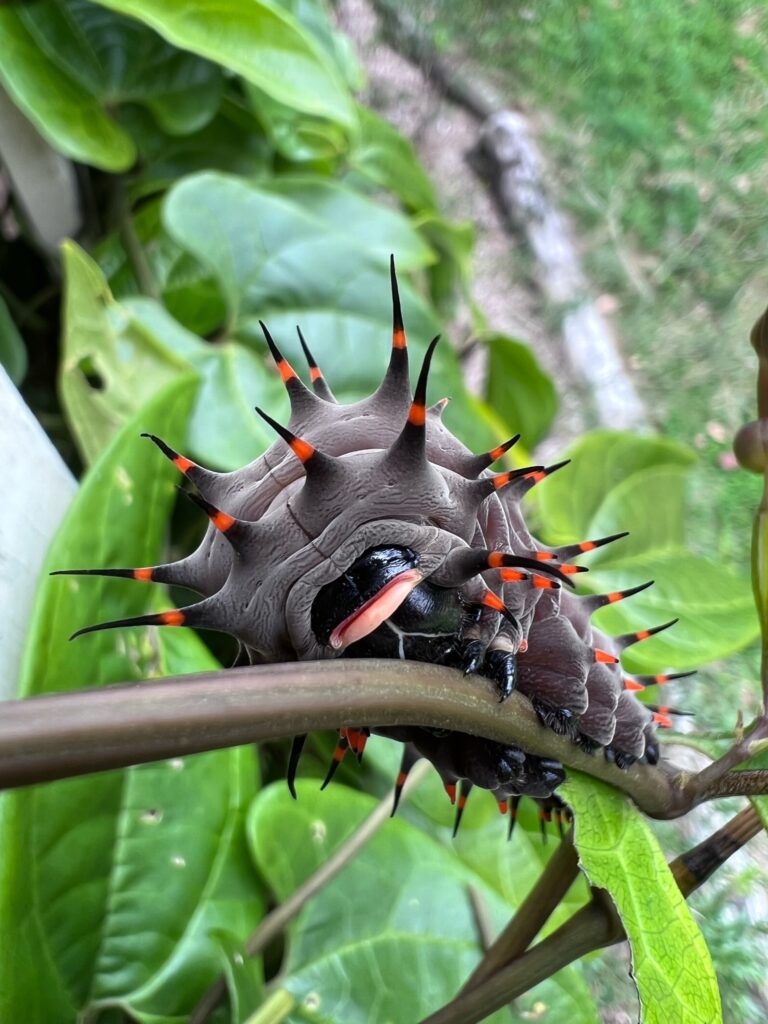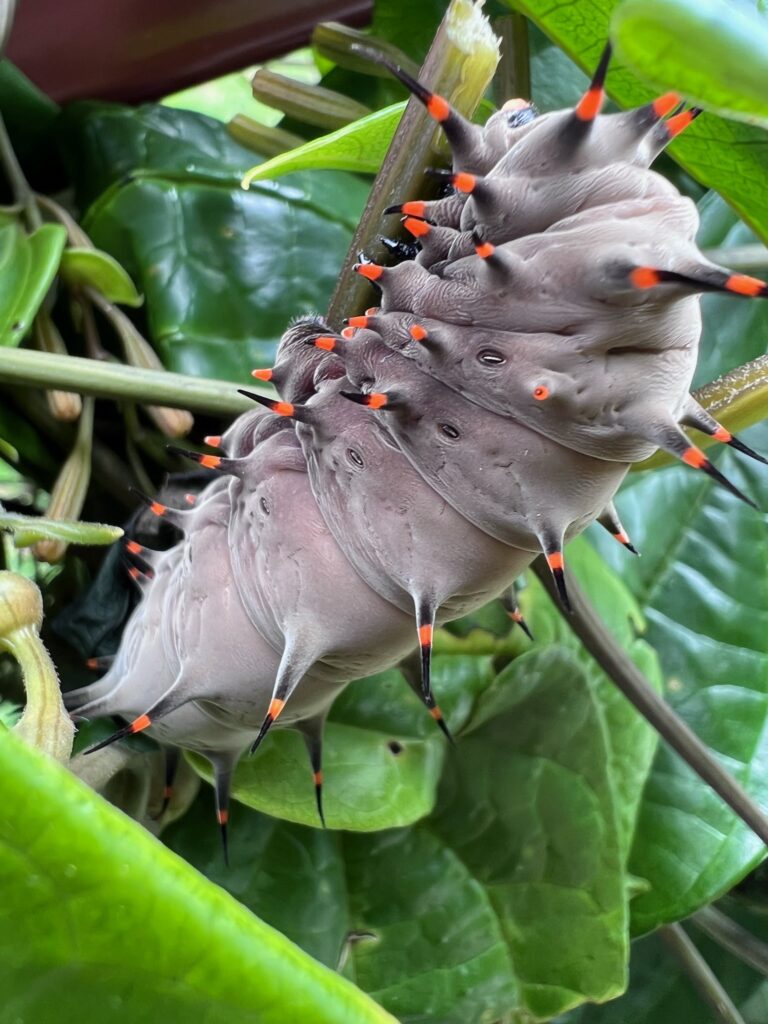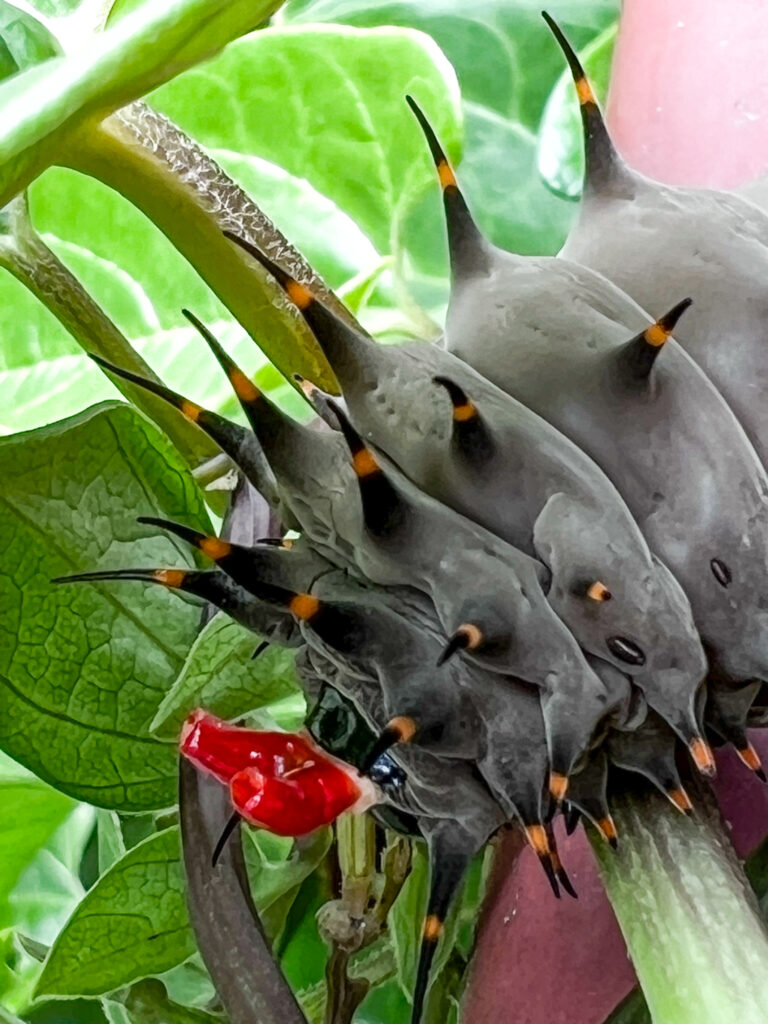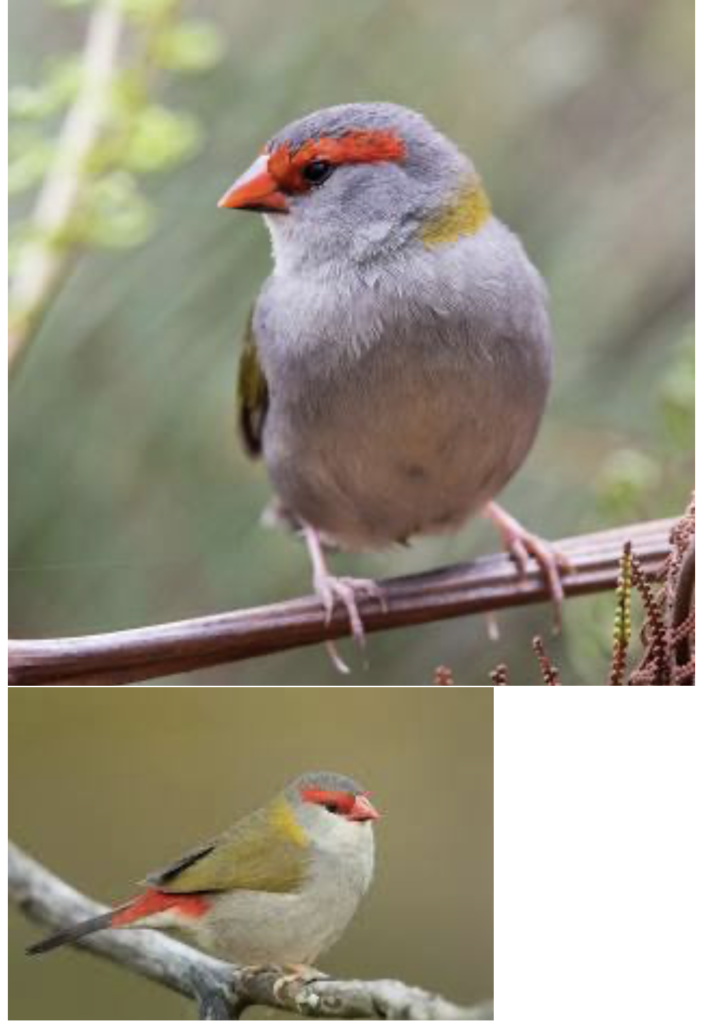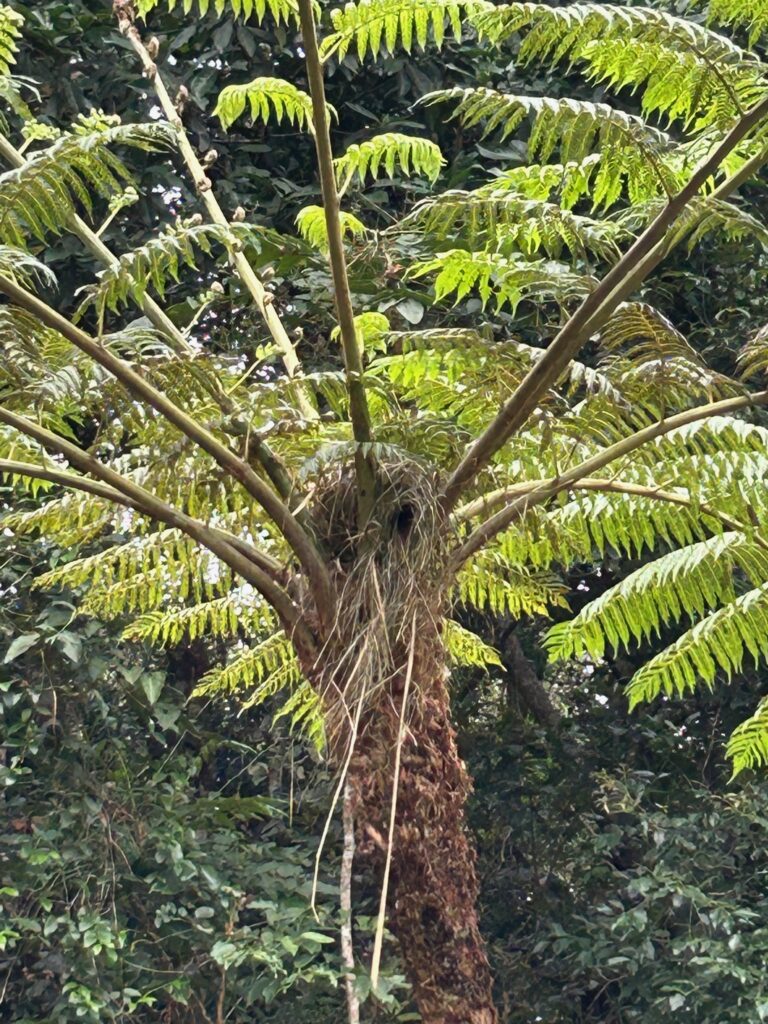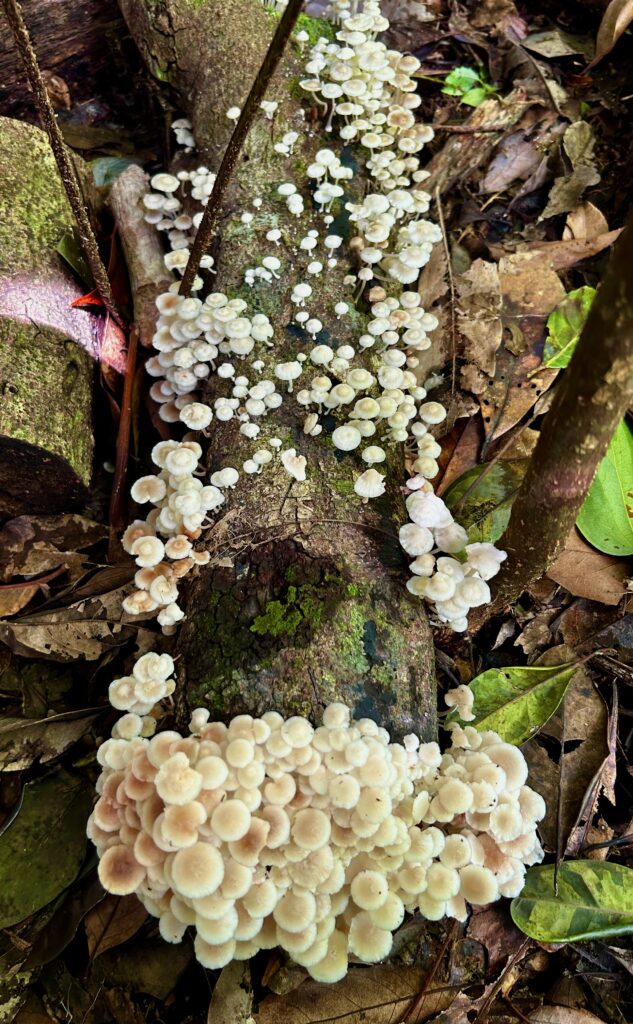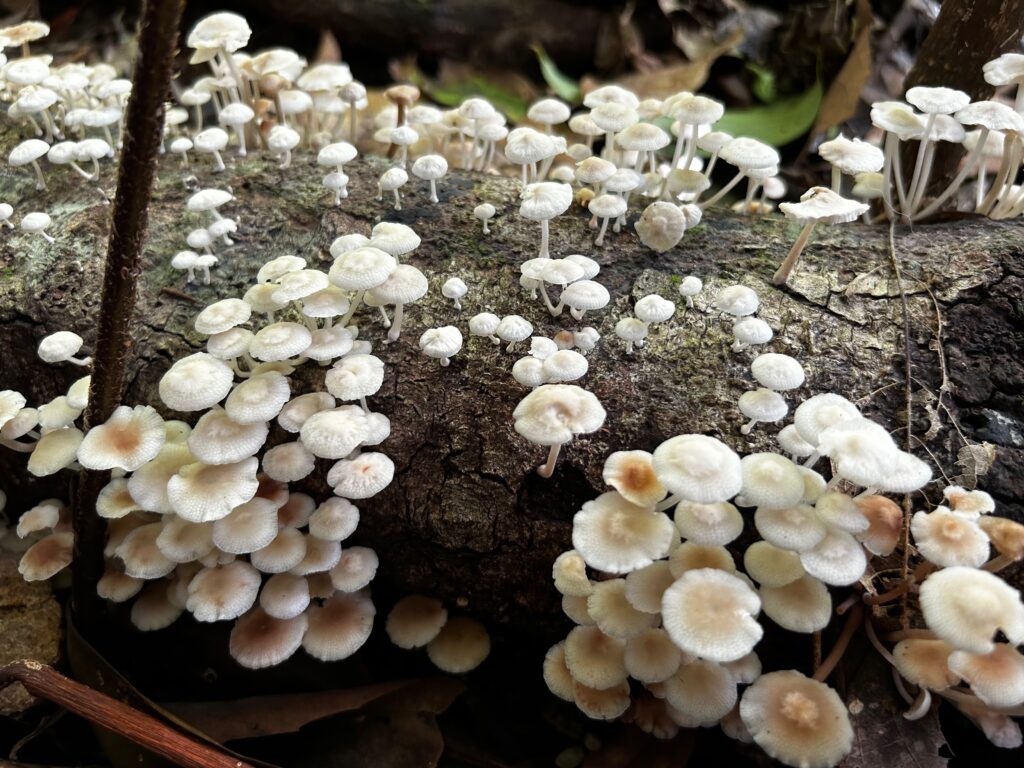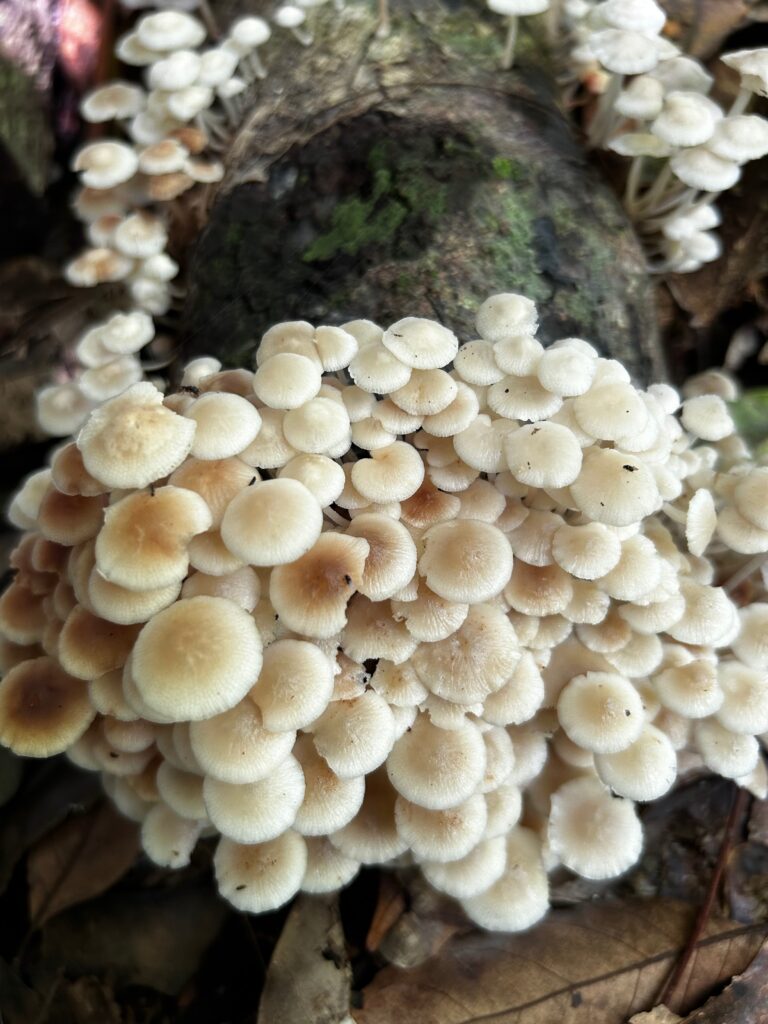One of the highlights of the Tropical BBQ last Saturday evening (aside from the excellent food and wonderful company) was the announcement of the winners of this year’s Garden Competition. As usual, Bunnings supplied both the prizes as well as the judges (Dee and Ange) for the competition. Despite a gruelling schedule of inspections from early morning to late afternoon, the judges’ enthusiasm for the wonderful variety of floral displays and landscaping never abated. In fact, they insisted on creating a new prize this year so that the 5 acre blocks also had a highly recommended garden (in previous years we only gave a highly commended prize for a village garden). We are very grateful to Bunnings for the ongoing support for this competition.
The winners this year are listed below along with comments from the judges.
Best 5 acre garden: Bobbi Parker
This garden made us feel like we were children on an a hunt through a magical forest and finding a secret cabin, everything was so well thought out. From the fairy gardens to the signage throughout, it truly was a magical experience
Highly Commended 5 acre garden: Don Battersby
We simply could not overlook the amazing abundance of spectacular anthuriums in a single location, we loved chatting to don about his beauties. The passion he has for his plants is very obvious and we look forward to seeing his orchids in bloom.
Best Residential Garden: Michele Bird
This garden immediately makes you want to grab a cuppa, maybe a book and never leave. We could easily have stayed forever, surround by the natural sounds of the rainforest and all its beauty.
Highly Commended Residential Garden: Glenda and Nick Van Rhynswood
What a spectacularly well thought out and maintained garden. The wide variety of plants and colours made for a captivating viewing experience.
Best Commercial Garden: Gumburu
This immaculately kept grounds was such a pleasure to view, it is very apparent that a lot of love and dedication are required to maintain this absolute gem.
Best display or unique plant: Peter and Dorothy Klumpp
Klump: The beautiful bed of multi coloured Anthuriums was a sight to behold, whilst the hints of Greek architecture throughout was so fun and playful. None of us were game to climb the tree-house ladder though
Congratulations to all the winners, and to all of our talented gardeners throughout
the village and blocks who have helped to make Paluma such an amazing and visually spectacular place to live in and visit.

